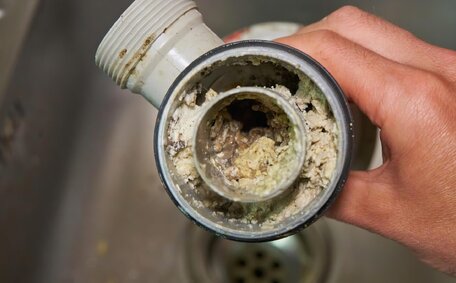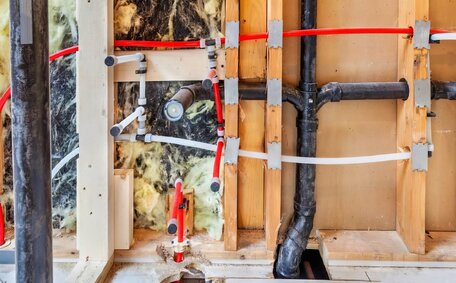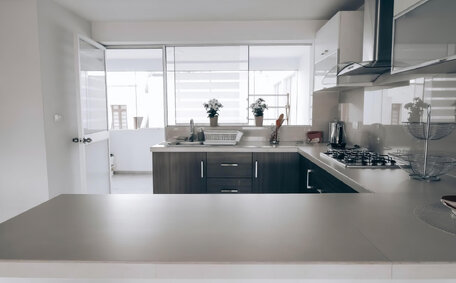Overview of Modern Gas Appliance Technologies
Recent advancements have significantly improved the efficiency and sustainability of gas appliances. New technologies are facilitating an energy transition from conventional natural gas to renewable gas sources such as biomethane and green hydrogen.
Smart technology integration now allows gas appliances to modulate their fuel consumption based on demand. This results in heightened efficiency and breakthroughs in emission reduction. Additionally, hydrogen blends’ compatibility with existing gas networks heralds a significant step towards emission reduction.
This article will shed light on these cutting-edge gas appliance advances that are pertinent for households and businesses aspiring to reduce energy bills and carbon emissions.
The Role of Renewable Gases
Renewable gases such as biomethane and green hydrogen have long been crucial in the decarbonization journey of the present gas infrastructure. Biomethane, produced via anaerobic digestion of organic waste, offers a carbon-neutral alternative by substantially lowering carbon dioxide emissions. The EU has aspirations to amplify biomethane production to 35 billion cubic metres annually by 2030, thus significantly diminishing air pollution as they connect gas with cleaner sources.
Green hydrogen is also being rapidly invested into as it can be blended into heat pump hot water systems at up to 20% without infrastructure changes or end-use appliance adjustments. The EU’s allocation of €470 million for large-scale green hydrogen electrolysers represents a stride towards both an all-electric future and a robust renewable gas transition.
Hydrogen Integration in Gas Appliances
Hydrogen technology has the potential to greatly reduce fossil gas use in appliances, thereby contributing significantly to achieving net zero emissions. by offering a higher calorific value per cubic metre, green hydrogen permits a single burner to maintain efficacy with lower energy consumption by up to 20 per cent while providing equivalent services.
Infusing 20% hydrogen by volume into current gas networks, a percentage that has potential to increase over time, is feasible without infrastructure alterations or adjustments to consumer appliances. Higher blends would require upgrades like hydrogen-ready boilers for gas customers. In 2021, the EU already achieved an 8% hydrogen blend in their gas distribution system, signalling a sustainable shift for homes businesses alike in Keele.
Achieving elevated hydrogen concentrations, energy networks, especially the reticulated gas network, can activate decentralised hydrogen storage to answer peak hot water gas demand times. Fuel cells can also provide on-site hydrogen conversion to then power appliances, making gas hot water and heating solutions more sustainable.
Smart Gas Meters and Monitoring
Innovative smart gas meters can safeguard resources by providing vigilant monitoring and improvement of indoor air quality and gas usage management. Unlike basic metres that only measure total consumption, smart gas metres can provide detailed analytics on demand fluctuations and gas appliance performance, helping residents save money.
This data empowers consumers to better understand their year energy bills and consumption patterns, offering insights reflective of your local energy dynamics. For example, smart gas valves can automatically throttle gas flow based on usage needs. This allows appliances to modulate their fuel intake for greater efficiency.
The monitoring capabilities of smart metres also provide visibility on potential appliance issues and opportunities to optimise settings. With detailed usage insights, households and businesses can pinpoint wasted energy and high-emission activities to target for improvement.
Improving Efficiency in Gas Appliances
Modern gas appliances, especially in gas heating, integrate intelligent technology to modulate and optimise their fuel consumption. This is enabled by electronic gas valves that can throttle the gas flow based on the heat demand.
Modulating gas boilers dynamically adjust their output, delivering precise control for domestic water heating and space heating requirements. This prevents overheating and wasted energy.
Smart thermostats, which are vital for efficient gas hot water and home heating when paired with reverse cycle air systems, can only bolster efficiency, steering your home off gas via remote adjustments and insightful usage analytics. Connectivity with other household systems is also possible. This allows for greater integration and whole home energy optimisation.
Condensing technologies that ensnare waste heat, flue gas heat exchangers, and augmented insulation, collectively reduce energy wastage and expeditiously heat up spaces with superior efficiency. Combining these improvements with reverse cycle air systems, gas appliances can achieve efficiency levels exceeding 95%, representing a pinnacle of efficiency compared to traditional models.
Policy Shifts Towards Electrification
Statements from the energy minister and overarching policies progressively promote residential electrification, with an emphasis on new home construction to support sustainability objectives. This is hastening the shift to all-electric dwellings by substituting gas with electricity-powered appliances, imbuing homes with efficient alternatives for space heating, cooking, and hot water needs.
Victoria’s proposed gas substitution roadmap outlines a transition for over 670,000 homes and businesses to adopt electric stoves and other solutions in place of gas by 2050. The roadmap, which will require planning permit approvals, bans gas connections in all new homes and residential subdivisions from 2025.
In reaction to such mandates, service providers are spearheading new advancements that smooth the shift from residential gas fixtures to efficient electrical alternatives. This includes aiming for 100 renewable gas integration, Hydrogen-ready equipment, smart monitoring systems, and high-efficiency dual fuel appliances for integrated heating cooling that enable continued gas usage where appropriate.
While policies vary across jurisdictions, the collective trajectory, reinforced by alternatives such as solar PV systems, steers us away from dependence on fossil gases. This will likely position most households to shift your home off gas completely by eventually replacing gas appliances with electrical alternatives.
Consumer Adoption of New Gas Technologies
The adoption of modern technologies for heating, cooking, and integrated systems amongst consumers hinges on factors like cost, availability, perceived benefits, and environmental goals alignment.
The initial cost can deter individuals, although long-term savings from switching to renewable gases or hydrogen could be considerable.
However consumer trends show a willingness to invest in tech that improves energy efficiency. Smart gas metres and more efficient appliances, enhanced by technology from ridge national laboratories, appeal to consumers by promising effective management of energy costs.
As policies incentivise electrification, Consumer decisions will balance enhanced sustainability with cost-effectiveness when transitioning to electric heating and cooking appliances.
Renewable gas solutions need to prove their reliability, affordability, and substantial emission cuts to boost consumer uptake.
The Future of Cooking with Gas
The trend for cooking appliances is clearly shifting towards electric ovens and alternatives, moving away from reliance on fossil fuels. Government policies are progressively promoting building electrification, with targets to phase out new gas connections in residential homes, impacting year energy reliance and the future use of gas stoves.
This momentum is fuelled by sustainability objectives that aim to lower emissions linked with burning natural gas, hinting at a future where the electric stove reigns. Nonetheless, the industry is answering with ingenious solutions that facilitate ongoing gas cooking capacity in the existing home environment.
A burgeoning trend involves the integration of renewable biogases such as biomethane into infrastructure, ensuring cooking gas remains sustainable. Gas utilities plan to substitute natural gas with more renewable options to replace fossil fuel supplies. This maintains the benefits of cooking with your gas stove while striving for zero emissions.
Hydrogen-ready hot water and cooking appliances mark significant advancement by enabling the use of substantial proportions of low-carbon fuels like pure hydrogen. Paired with onsite hydrogen storage, homes can shift cooking hot water needs to this low-carbon fuel.
Nonetheless, advancements in induction cooktops and heat pumps are pioneering efficient electric homes, elevating electric cooking and heating to higher energy efficiency levels. With reduced cooking time and precise temperature control, electrical induction positions itself as a high-performing alternative. Consumer choice weighs convenience against emissions reductions, often considering electric options more than gas.
Ultimately both modern gas and electrical cooking tech have strengths. Innovations on both sides will continue as households aim for energy savings while progressing sustainability.
Decarbonization Efforts for Gas Networks
Around Australia, gas networks fulfil a significant role in supplying heating and hot water solutions for homes and commercial entities. However the emissions from burning natural gas are substantial when considering our climate change and renewable energy targets.
Various initiatives are unfolding to curtail the carbon footprint of existing infrastructure, which includes adopting renewable gas and employing smart systems, potentially stretching to the integration of electric heat for bottled gas outdoor appliances.
Utility providers’ policies to supplant conventional natural gas with biofuels like biomethane apply new approaches aiming to lessen greenhouse gas emissions. produced through organic waste, biomethane can provide the same functionality while greatly reducing greenhouse gas emissions.
Merging green hydrogen into natural gas offers substantial potential for decarbonization and could lead to the development of hydrogen and natural gas hybrids. Integrating just 20% hydrogen by volume decreases fossil gas reliance without infrastructure or appliance changes.
Smart gas metres, developed with insights from oak ridge national studies, track emissions profiles and pinpoint renewable fuel integration opportunities based on usage. Monitoring also enables the industry to mitigate potential health risks and enhance air quality by optimised routing of storage and supplies.
Although policy directions differ by state, investment in gas sector technologies is dedicated to enhancing environmental outcomes without compromising supply. The natural gas industry sees renewables and hydrogen as key pathways for their role in a low-carbon future.






